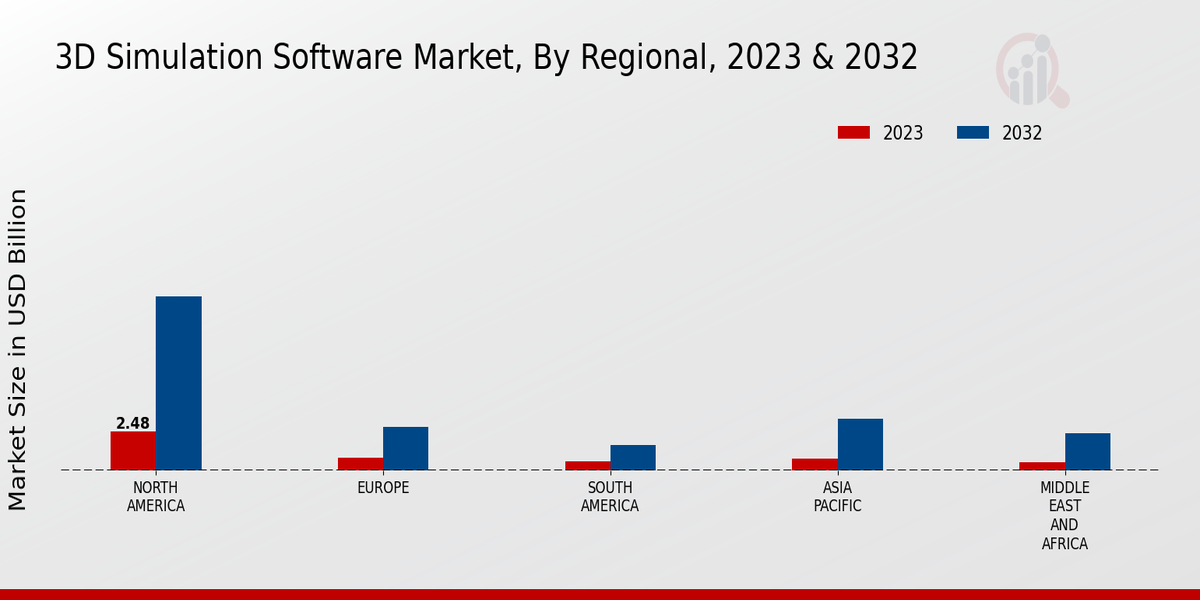Market Growth Projections
The Global 3D Simulation Software Market Industry is projected to experience substantial growth, with estimates indicating a market value of 39.6 USD Billion by 2035. This growth trajectory is underpinned by a compound annual growth rate of 20.43% from 2025 to 2035, reflecting the increasing adoption of simulation technologies across diverse sectors. The market's expansion is likely driven by the continuous evolution of software capabilities, coupled with the rising demand for innovative solutions in industries such as healthcare, manufacturing, and education.
Advancements in Technology
Technological advancements play a pivotal role in the Global 3D Simulation Software Market Industry. Innovations such as artificial intelligence and machine learning enhance the capabilities of simulation software, allowing for more complex and realistic simulations. These technologies enable users to analyze vast amounts of data, leading to improved decision-making processes. As industries adopt these advanced tools, the market is poised for substantial growth, with a projected compound annual growth rate of 20.43% from 2025 to 2035, reflecting the increasing reliance on sophisticated simulation technologies.
Expansion of the Gaming Industry
The expansion of the gaming industry serves as a crucial driver for the Global 3D Simulation Software Market Industry. With the increasing popularity of virtual reality and augmented reality gaming, developers require advanced simulation tools to create immersive experiences. These tools enable the design of realistic environments and interactions, enhancing user engagement. As the gaming market continues to grow, the demand for sophisticated 3D simulation software is expected to rise, further contributing to the industry's overall growth trajectory.
Rising Demand for Virtual Prototyping
The Global 3D Simulation Software Market Industry experiences a surge in demand for virtual prototyping, driven by industries such as automotive and aerospace. Companies increasingly rely on simulation software to create accurate models, reducing the time and cost associated with physical prototypes. For instance, automotive manufacturers utilize these tools to test vehicle designs under various conditions before production. This trend is expected to contribute to the market's growth, with projections indicating a market value of 5.13 USD Billion in 2024, highlighting the industry's shift towards digital solutions.
Growing Adoption in Education and Training
The Global 3D Simulation Software Market Industry sees a growing adoption of simulation tools in educational institutions and training programs. These tools provide immersive learning experiences, allowing students and professionals to engage in realistic scenarios without the associated risks. For example, medical schools utilize 3D simulation software to train students in surgical procedures, enhancing their skills in a controlled environment. This trend not only improves educational outcomes but also drives market growth, as educational institutions increasingly recognize the value of simulation in enhancing learning experiences.
Increased Focus on Safety and Risk Management
The Global 3D Simulation Software Market Industry is significantly influenced by the heightened focus on safety and risk management across various sectors. Industries such as construction and manufacturing utilize simulation software to identify potential hazards and optimize safety protocols. By simulating real-world scenarios, companies can proactively address risks, ensuring a safer working environment. This emphasis on safety is likely to propel the market forward, as organizations prioritize risk management strategies, contributing to the anticipated market growth to 39.6 USD Billion by 2035.





















